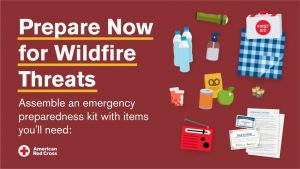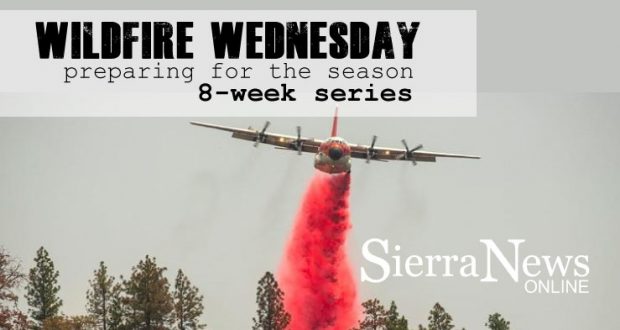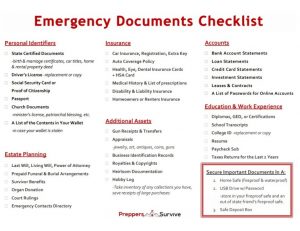This is the fifth in a series of articles SNO will be doing called “Wildfire Wednesday.” To begin, there will be 8 articles presenting “The 12 Step Guide to Help Plan in Advance for Evacuation.” This guide was put together by Katie Hepler and the members of the California Fire Support Group on Facebook. The California Fire Support Group is “intended to allow collaboration between those who have been through the fire and recovery process, and those who want to be prepared or are currently experiencing a fire.” Katie Hepler got involved in wildfire relief and recovery in 2015 when the Butte Fire devastated the community of Mountain Ranch and Calaveras County.
MOUNTAIN COMMUNITIES — Wildfire season is just around the corner and being prepared is vital for keeping your family and community safe. Following is Step 7 from “The 12 Step Guide to Help Plan in Advance for Evacuation.” This guide was put together by those who have experienced evacuations firsthand. The guide is set up in a way that encourages you to do the work now, ahead of time, so that if and when you need to evacuate, you will be able to do so quickly and safely.

Step 7
Identify Vital Documents
Although there are plenty of things you will want to take with you in the event of an evacuation, there are some documents that will make your life much easier to have. These are the ones that you may need information from right away, you may need them to obtain displacement benefits, or they may be difficult to replace. The following list is meant to get you thinking on what you will need to prep, be sure to add others as needed:
- Driver’s License/Passport
- Health Insurance Information/Cards
- Social Security Card
- Birth Certificate(s)
- Other Legal Docs (marriage, divorce, adoption, wills, trusts, etc)
- Ownership Docs (property deeds/agreements, vehicle titles and registration, etc)
- All Insurance Docs (home, auto etc. declarations page and full policy if able)
- Financial Docs (bank accounts, investments, retirement, loans, liens, income tax, etc)
There are a handful of different options for handling these documents. But I am going to outline my personal preference. Many people may already keep important documents like this together in a central location. This obviously makes them easier to grab in the event of an evacuation. However, it’s always great to have a backup plan.
Create a Household Binder
I would suggest making copies of the information needed and adding it to a household binder.
This is different than your Evacuation Plan Binder. The Evacuation Plan Binder is meant to be smaller, to the point, to get you out of the house and to safety. The Household Binder is meant to hold your important documents and drives and be your record keeper.
You can keep this binder in or near your Go Bag (STEP 8) so you are certain it will go with you. You can even put your external hard drive (if you have one) in the same binder. Originals are always preferred so you don’t have to get copies later. If there is time to grab them, great! If not, you’ve got copies of all the information you need already in your Go Bag or nearby.
NOTE: For the security of your personal information, if you plan to keep you binder in your Go Bag – DO NOT keep your Go Bag in your vehicle!
An easy binder idea is one with plenty of room that nothing will fall out of. This of course… means a zipper! Here’s an idea for a handy one (of course any binder you feel comfortable with will do!):
https://smile.amazon.com/Five-Star-3-Pocket-Expanding-72206/dp/B00COHAJSU/





